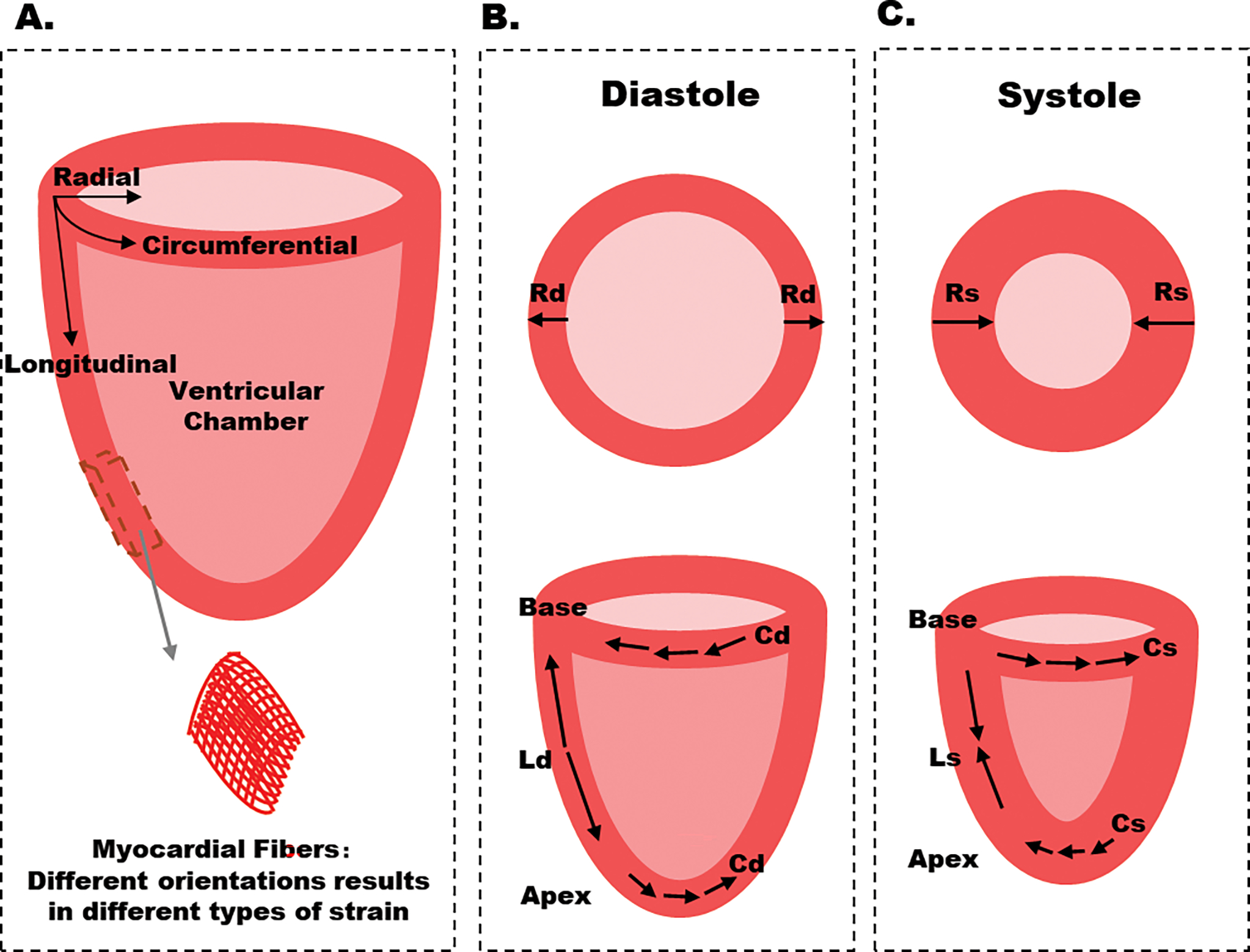Figure 1.

Schematic diagram of myocardial strain. A. Three types of strain are defined along longitudinal, circumferential, and radial, respectively. B-C. Circumferential and radial strains are obtained from short-axis sections, whereas longitudinal strain is obtained from long-axis sections. Cd: circumferential strain in diastole, Cs: circumferential strain in systole, Ld: longitudinal strain in diastole, Ls: longitudinal strain in systole, Rd: radial strain in diastole, Rs: radial strain in systole. In the long-axis plane, the longitudinal deformation corresponds to apex-base shortening / lengthening. In the short-axis plane, circumferential strain is tangential to the epicardial wall (oriented along the perimeter), and radial strain is oriented toward the center of the ventricular cavity. Ventricular sections close to the apex have a counterclockwise systolic rotation, whereas sections close to the base have a clockwise rotation.
